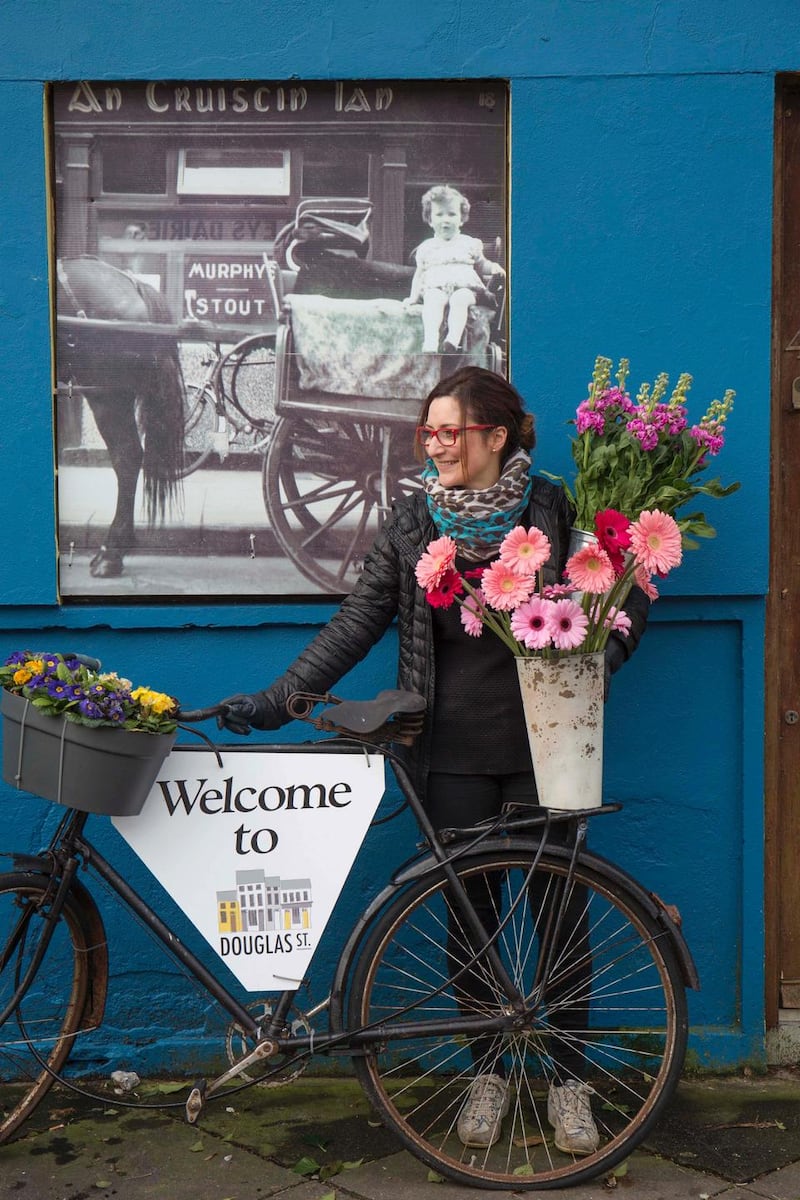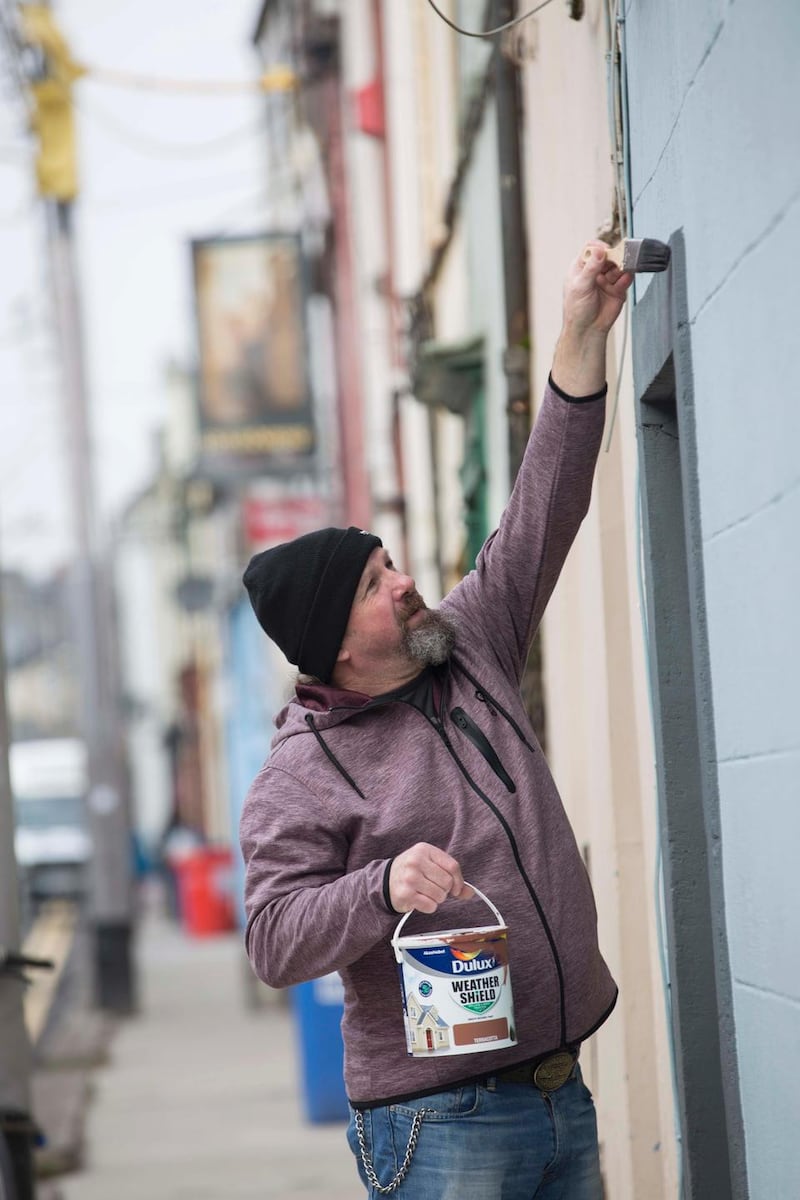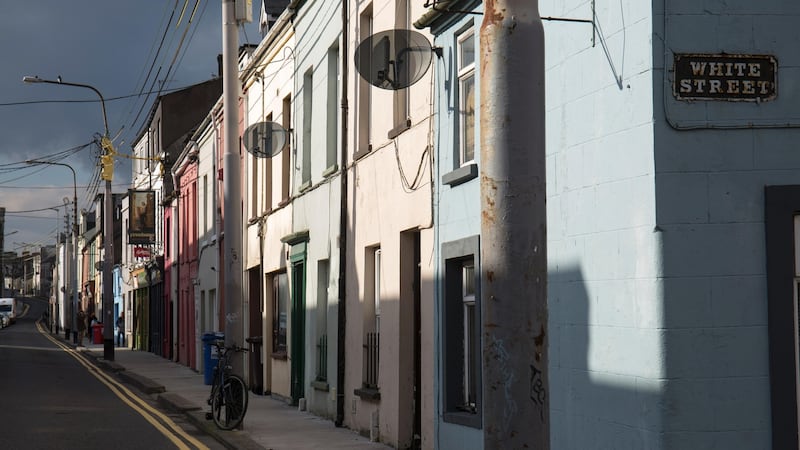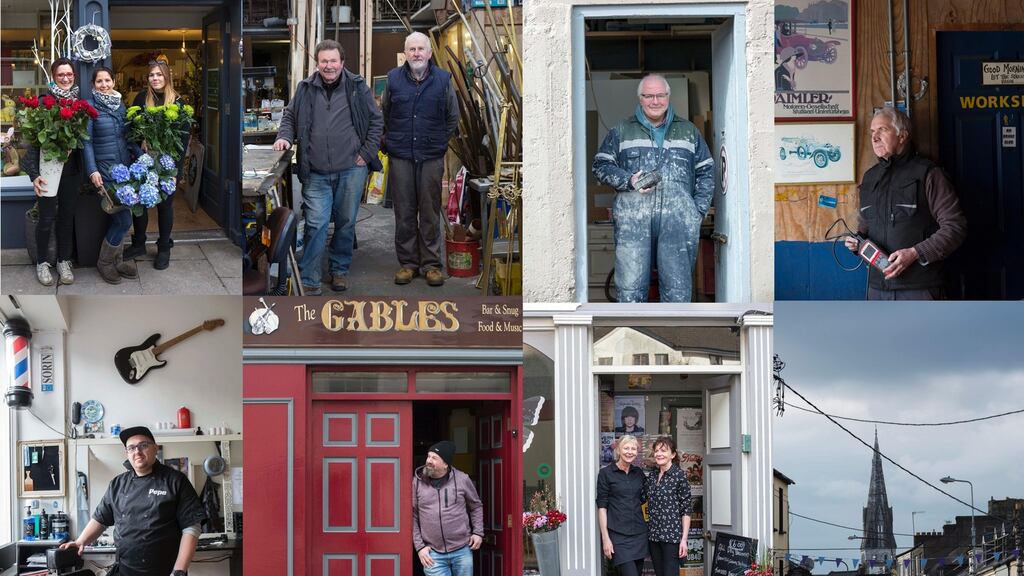Little Aisling Wynn pulls open her curtains and peeps out to see a circus performer in full flow. The Pizza Parlour next door is teaching children how to make their own delights while an on-street traditional music session is getting under way a few doors up.
Douglas Street is alive.
Once the main shopping thoroughfare in Cork city, this short but bustling street has endured good days and bad over the years. But now, thanks to an initiative by local business people and residents, it’s fighting back, grabbing its destiny by the collar and injecting light and colour into dark corners.
When you’re four, as Aisling is, you don’t worry too much about the macro; you concentrate on the micro – the circus performer outside your bedroom window.
Autumnfest, held on the street last September, attracted crowds of at least 5,000 people – the pizza, the music, the circus acts, and the craic are a result of hard work by locals but also a catalyst for even more on-street rejuvenation.
Aisling makes a vow to tell all to Chico, the three-legged cat from Istanbul who lives next door at 64. It’s not known if Chico interacts with the black and white cat who sits in the window of number 28 each day with a skateboard. Aisling sees him when she walks to kindergarten each morning. She calls him the ‘Skateboarding Cat’ because on the days he’s not sitting in the window, the skateboard tends to be missing too.

Over coffee in the charming Cork Flower Studio on Douglas Street, Justine Looney tells me how street revival began and how it, like the sprays of colour around us, has blossomed.
“During the downturn, the level of anti-social behaviour on the street seemed to increase, drinking, graffiti . . . that kind of thing. In April of 2016 we decided to tackle the issue for the good of the street, so we set up a WhatsApp group where we could share information on anti-social behaviour. About 50 of us are on it,” she explains.
Anti-social behaviour
Where, previously, individual calls to the gardaí to report anti-social behaviour had varied levels of success, a new approach was taken whereby all those on the WhatsApp group would ring the local Garda station individually – so up to 50 calls were received on the same issue, forcing a speedy response.
"It was something the gardaí welcomed," explains local GP Sinead Cotter.
“We worked very closely with them and within months of starting the local group we noticed changes.”
Now the WhatsApp group is used to share positive stories and news.
A derelict two-storey blue house once exemplified the decline of the street, but it’s been painted and the façade restored – a symbol of the street’s can-do attitude.

Val O’Mahony of the Gables pub paints over any graffiti he happens to find and Breda McCarthy, who’s been running the Bia Blasta café for 25 years, believes her customers now walk in for their coffee and sandwich with a spring in their step.
Peter Murphy, an architect here, explains: "We held our meetings in Coughlan's pub and the Gables up the road. Many of us who'd worked on the street for years but didn't know each other have now become friends. The whole initiative has brought the street so much closer together."
Paddy O’Shea can remember a time when Douglas Street seemed to be the centre of the universe.
When the sound of horse hooves on the road below would echo through the little network of streets in this ‘village within a city’.
“Everything you needed was here and we’d provide coal to all the businesses and all the houses. Sure when they started building estates on the edges of the city families started to move out and businesses closed. It’s great to see more life back on the street,” he tells me.
His black hat with ‘Bord na Móna’ emblazed on it tilts slightly to one side and his hands are blackened by the coal he’s worked with since he was a child.
“My father started the business in 1929. I still enjoy it and get in for 7am each morning. I’ll be 80 now next year but as long as I can keep going I will,” says Paddy.
He's a link to times past, as is Coughlan's pub on the main drag. Edel Curtin, who runs the pub, and lives on the street, was one of the founders of the Douglas Street WhatsApp group.
Her dream is to bring Tom Waits to Cork – and while here he could play in the intimate music venue.
Coughlan’s is as much a museum with Ireland’s largest gin selection as it is a pub.
“Officially it opened in 1831 but we believe it may have been established even before that in 1824,” says Curtin.

We're sitting at the historic bar counter surrounded by echoes of yesteryear. Framed letters from the 1800s, the medical bag used by the founding publican who also happed to be a doctor and a guitar once played by the late great Johnny Cash are on display.
Curtin is looking to the future too and the continued resurgence of this eclectic street.
“Its just been amazing to see how the street has come together with the same vision. It’s a special place, the new intermingled with the old. And our elder customers who come in for a pint feel the benefit too. It lifts their spirits.”
Paul McGuirk, the Cork city centre co-ordinator, has been an intrinsic link for the local community.
"Wherever we, in Cork City Council, can help we will. The traders and people who live on Douglas Street understand the pulse of the street, they know what's needed so when they come to us we find a way to assist – be that providing funding for the painting of buildings, planting of flowers or the staging of local events."
At the top of this winding and charming street is Nano Nagle Place – where a €10.5 million regeneration project was completed in 2017.
With its heritage centre, gardens and layers of tranquillity, this place is already attracting more people to Douglas Street.
There's an international feel too. Fernando from Italy runs the Novecento restaurant with his Corkonian other half Orla, while Borja Sanz from Madrid and his wife Raquel Escrich from Barcelona own the Iberian Way tapas bar – a haven for lovers of Spanish cuisine.
In many ways, Douglas Street epitomises the journey and internationalisation of Cork. And in their own way, those behind the drive to improve it mirror those down through the generations who have helped shape and mould the proud city by the Lee.



















